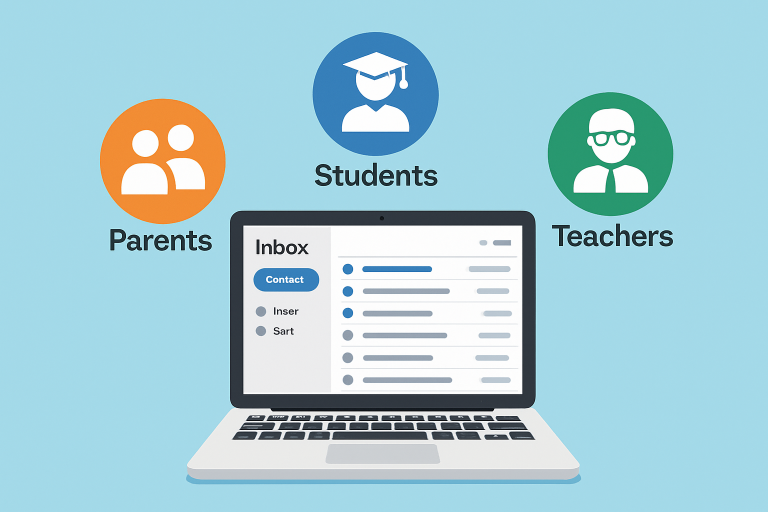Key Takeaways:
- Effective email campaigns can enhance communication between schools and their communities.
- Personalization and segmentation are crucial for engaging diverse school audiences.
- Maintaining data accuracy and compliance ensures trust and deliverability.
Table of Contents:
- Introduction
- Understanding Your Audience
- Crafting Personalized Content
- Ensuring Data Accuracy and Compliance
- Timing and Frequency of Emails
- Monitoring and Optimizing Campaigns
- Conclusion
Introduction
Well-executed email campaigns have become one of the most effective ways for schools to communicate and build stronger relationships with their students, parents, and staff. By using targeted outreach and tailored messaging, schools can establish meaningful connections and drive engagement. For educational institutions looking to improve communication with specific roles, such as counselors, leveraging tools like a Guidance counselor mailing list ensures the right audiences receive timely, relevant updates.
Trust is essential in school communications; it’s the foundation upon which families and communities base their ongoing engagement. Through transparent, personalized email messaging, schools can foster that trust, ensuring community members stay informed, engaged, and confident in the information they receive.
As educational environments continue to evolve with technology, targeted email marketing remains crucial. Not only does it allow schools to streamline communications, but it also helps keep stakeholders in the loop on vital information, programs, and events.

Understanding Your Audience
Trustworthy communication starts with knowing who you’re speaking to. School communities are made up of diverse groups, each with distinct communication needs and information preferences. By segmenting email lists into categories such as parents, students, teachers, and staff, schools can deliver focused messaging that’s relevant to each group. For instance, updates on curriculum changes might be more relevant to parents and faculty, while information on upcoming social events or extracurricular opportunities will resonate with students. When schools take the time to understand their audience’s priorities, their communications are more likely to be opened, read, and acted upon.
Crafting Personalized Content
Personalization is more than just using a first name—it’s about curating information to address each recipient's real needs. For schools, this could mean sending event reminders to parents of elementary students, providing career guidance resources to high school seniors, or distributing staff training opportunities to faculty members.
Including practical resources such as study tips, mental health guidance, and sample lesson plans can add substantial value. Furthermore, sharing success stories and case studies from within or outside the school community can foster a sense of belonging and demonstrate the tangible benefits of engagement.
Best Practices for Personalizing School Emails
- Use audience data to tailor subject lines and email content.
- Offer actionable resources and relevant news based on segment interests.
- Highlight achievements and initiatives that reflect the school’s values.
Ensuring Data Accuracy and Compliance
Deliverability and data security are essential for every school’s email strategy. Using verified email lists—such as ensuring only official addresses for authorized staff—enhances accuracy, lowers bounce rates, and strengthens your institution’s reputation as a reliable sender. These verified lists usually reach 90–95% accuracy, leading to better engagement. Best practices involve routinely auditing email lists to preserve data integrity and restricting access to sensitive contact information. Clear communication about your data collection and usage policies can also build trust and secure ongoing consent from your recipients.
Timing and Frequency of Emails
Well-timed email campaigns can dramatically increase engagement. Schools can maximize relevance and impact by syncing their outreach with academic calendars, key events, and important deadlines. For example, reminders ahead of application periods or funding deadlines can help families and staff prepare effectively.
Consistency also matters. Regular but not overly frequent communications—such as monthly newsletters or timely updates before school breaks—help your audience know when and what to expect from your institution. Each outreach effort should add value and maintain a balance, avoiding information overload while keeping stakeholders consistently informed.
Monitoring and Optimizing Campaigns
Continuous improvement is central to effective email marketing. Schools need to monitor open rates, click-through rates, and follow-through actions on each campaign. These metrics provide insight into what audiences find most relevant and which tactics drive the greatest community involvement. Experimentation is key—A/B testing subject lines, message formats, and send times helps optimize future campaigns. Schools can also survey their community to learn which types of content are most appreciated and adjust communications accordingly. Digital analytics tools and feedback loops ensure that strategies stay responsive to the needs—and trust—of your audience, evolving with their preferences and feedback.
Conclusion
Building trust through targeted email campaigns requires a blend of understanding your community, delivering purposeful content, maintaining accurate, compliant data, and strategically timing your messages. With ongoing optimization and a focus on tailored engagement, schools can nurture stronger connections and more active participation across their communities—creating an environment where everyone is informed, valued, and involved.



No comments:
Post a Comment
I love reading and responding to comments but in order to get my reply you must ensure you are NOT a no-reply blogger. If you are, here are some quick steps to change that!
1. Go to the home page of your Blogger account.
2. Select the drop down beside your name on the top right corner and choose Blogger Profile.
3. Select Edit Profile at the top right.
4. Select the Show My Email Address box.
5. Hit Save Profile.